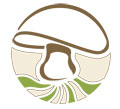Identifying fungi
When starting out: these are examples of resources that can help beginners to
get started. They are more useful for common and distinctive species.
Google
Lens, app for phone and tablet
Upload an image and receive information about the image. Can
work well with distinctive fungi.
Shroomify, app for phone and tablet
Provides a top 20 list for each month, and a basic identification
guide.
Mushrooms, River
Cottage Handbook No.1, by John Wright
Accessible language and reasonable photographs of good-looking mature specimens.
When in the field: these books are not comprehensive, but describe 500+ species. Identification is by picture matching, but beware of matching using colour which can vary, especially as a mushroom ages.
Collins Complete British Mushrooms and Toadstools: The essential photograph guide to Britain’s fungi, by Paul Sterry and Barry Hughes
Recommended as best available field guide by HFRG members. Organised by genus (scientific relationships), the top 100 species are highlighted.
Mushrooms, by Roger Phillips
Recommended as a useful field guide by HFRG members. Organised by genus (scientific relationships). See also RogersMushrooms.
When at home: identification at home is vastly improved if you are able to examine spore colour and preferably parts of a fungus using a compound microscope.
Mushrooms
and Toadstools of Britain & Europe by Geoffrey Kibby
4-volume set with paintings and descriptions including details of spores; the 4th volume is forthcoming. Lacks identification keys, but with good coverage of 2,000+ species. Probably too heavy to carry in the field.
Fungi of Temperate Europe by Thomas Laessoe and Jens H. Petersen
2-volume set with fantastic photos of 2,300 species. Keys are provided to genus, with images used for identification of species. The keys are in the form of distinctive identification wheels, which can be downloaded separately (in a large file).
An Initial Guide to the Identification of Mushrooms & Toadstools by Paul Nichol
A fairly straightforward diagrammatic key to the major genera of fungi.
For specialists at home: identification relies on examination of
spore colour and parts of a fungus using specialist chemicals and a compound
microscope.
Funga Nordica by Henning Knudsen and Jan Vesterholt (Editors)
2-volume set with few illustrations but comprehensive keys and descriptions of agarics (fungi with a cap like a shop-bought mushroom). This requires familiarity with technical terms used to describe fungal morphology.
Fungi of Switzerland by J. Breithenback and K. Kranzlin.
This 6-volume work set the standard which few other books managed to achieve with consistent descriptions, photographs and microscopic drawings of nearly 2,500 species. The species names are now a little outdated and new copies are quite expensive but are still are often the first reference for most of us.
The Resupinates of Hampshire by Alan Lucas and Paul Hugill
Images and a key for the “paint” fungi, which are often found on the underside of logs etc.
British Boletes With Keys to Species by Geoffrey Kibby
The Genus Russula in Great Britain by Geoffrey Kibby
British Milkcaps Lactarius & Lactifluus by Geoffrey Kibby
The Genus Agaricus in Britain by Geoffrey Kibby
The Genus Tricholoma in Britain by Geoffrey Kibby
The Genus Amanita in Great Britain by Geoffrey Kibby
